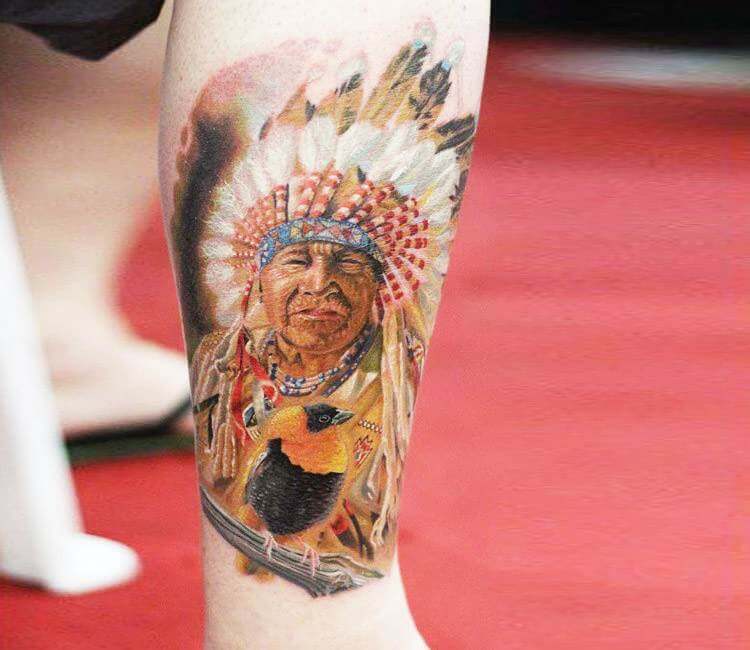The practice of tattooing among Native American tribes carries profound significance, diverging in scope and meaning across diverse cultures. Observations indicate that these tattoos function as markers of identity, societal status, and spiritual beliefs. They are an expression of an individual’s connection to their ancestry and the natural world, often involving intricate designs steeped in symbolism that conveys narratives of personal and communal value.
One of the earliest manifestations of tattooing can be traced back to pre-Columbian America, where indigenous populations utilized tattoos as an intrinsic element of their identity. The techniques and materials employed in tattooing were sophisticated, often utilizing natural pigments and tools derived from materials available in their environment. For instance, the use of charcoal, plant dyes, and animal fats was prevalent in the creation of these vibrant ink representations. Each tattoo was crafted with meticulous care, symbolizing not merely embellishment but a rite of passage or a testament to individual experiences.
Among various tribes, the significance of tattoos varied widely. The Navajo, for instance, are known to have traditionally employed tattoos as symbols of protection and spiritual connection. These tattoos often adorned the arms or legs and were believed to serve as a shield against malevolent forces. In contrast, the Haida people of the Pacific Northwest revered tattoos as markers of lineage and social standing, often depicting totemic imagery that encapsulated familial connections and clan affiliations.
The Cherokee, for another example, have a storied tradition encapsulating their cultural narratives through body art. Their tattoos often included symbolic representations of natural elements, aiming to forge a stronger bond between the individual and the earth. Animals, such as bears and eagles, were common motifs, signifying strength and a deep-rooted connection to spiritual realms.
As tattooing evolved over centuries, the meanings attached to these markings transformed, reflecting the dynamics of societal changes and external influences. The arrival of European settlers brought with it new ideologies, which sometimes clashed with indigenous practices. As a result, the wearing of tattoos fluctuated drastically; in certain instances, the practice became stigmatized among some tribes, while in others, it endured as a vital form of self-expression and cultural survival. The historical narrative surrounding tattooing is interwoven with stories of resilience. The tradition has re-emerged prominently in contemporary times, reflecting a renaissance of indigenous identity and pride.
Modern Native American tattoo artists draw upon traditional motifs with renewed vigor, integrating contemporary styles while remaining committed to cultural authenticity. This synthesis of styles is not merely aesthetic; it embodies a revival of cultural heritage that communicates the importance of storytelling through art. For instance, modern interpretations may enlist geometric patterns rooted in tribal history, paired with elements from current artistic movements. This convergence not only honors ancestral practices but also provides a means of navigating modernity, illustrating the continuing relevance of cultural symbolism.
Furthermore, traditional tattooing practices engage in dialogue with contemporary issues facing Native American communities, such as identity, sovereignty, and social justice. By reclaiming the practice of tattooing, many artists assert ownership of their narratives, challenging the historical marginalization faced by indigenous peoples. The act of tattooing thus transcends mere aesthetics; it embodies a form of resistance, an assertion of identity against the backdrop of cultural erasure.
The symbolism embedded in traditional Native American tattoos often encompasses elements that resonate across various tribes. Common themes include motifs of animals, plants, and celestial bodies, each imbued with meaning. For example, serpents are frequently depicted as symbols of transformation and renewal, while the sun might be viewed as a source of life and energy, representing endurance and growth. The incorporation of these symbols invites viewers to engage deeply with the narratives that encompass not only individual lives but also communal histories.
Moreover, the method of application is an integral aspect of traditional tattooing cultures. Techniques vary from tribe to tribe, with some employing hand-poked methods and others utilizing tools fashioned from bone, wood, or stone. The tactile nature of these techniques fosters an intimate relationship between the artist and the recipient, further deepening the spiritual significance of the tattooing process. Each puncture of the skin not only creates a physical representation but also invites the passage of ancestral energy, promoting healing and connection.
It is also crucial to recognize the role of female artists in the preservation of tattooing traditions. Many indigenous women have reclaimed the art form, utilizing it as a means of celebrating their heritage while uplifting their communities. By integrating storytelling and cultural education into their practices, these artists play a pivotal role in transmitting knowledge through generations, ensuring that traditional tattooing does not merely survive but thrives.
In conclusion, the roots of traditional Native American tattoos are woven into the fabric of identity, heritage, and resilience. The evolution of this art form reflects the dynamic intersections of history, culture, and personal expression. As both an embodiment of storied ancestry and an avenue for contemporary cultural expression, Native American tattooing serves as a testament to the enduring legacy of indigenous peoples. The resurgence of interest in these tattoos fosters a deeper understanding of their significance, both within tribal communities and in the wider societal context. Through the intricate designs and profound meanings attributed to these tattoos, a vibrant narrative of culture, history, and identity continues to unfold, inviting appreciation and respect for these ancient practices.
